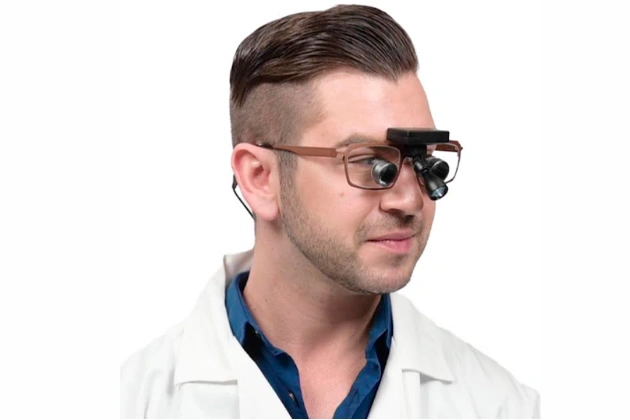In today’s operating rooms, clarity and precision go hand in hand. A surgeon’s vision directly affects outcomes, and one of the most important tools for ensuring clear visibility is the LED surgical headlight. Over the past few years, this equipment has evolved significantly, offering brighter light, improved comfort, and longer battery performance.
For professionals who spend hours in delicate procedures, these improvements aren’t just conveniences; they’re essential for accuracy and safety. Understanding how surgical headlights have advanced helps surgeons make better choices tailored to their specialty and workflow.
The Evolution of Surgical Lighting
Before LEDs entered the scene, halogen and xenon bulbs were common. They did the job but generated intense heat and consumed more energy. They also had short lifespans and produced light that sometimes distorted color perception.
The transition to LED technology changed that. LED surgical headlights now provide cool, natural, and efficient illumination with lifespans exceeding 50,000 hours. This shift has paved the way for smaller, lighter, and more reliable lighting systems.
Recent designs have taken things further with three core focuses:
- Brighter, more consistent illumination
- Longer-lasting, smarter battery systems
- Ergonomic comfort and better weight balance
Each of these innovations enhances surgical precision and supports better patient care.
1. Breakthroughs in Brightness and Optical Clarity
Modern surgical headlights now achieve light intensities up to 200,000 lux, brighter than natural daylight, while maintaining uniform distribution. This ensures surgeons can work without the distraction of shadows or uneven lighting.
Key Improvements:
- True-to-life color rendering: LEDs now have CRI values of 90 or higher, helping surgeons accurately distinguish tissues and vessels.
- Uniform beam pattern: Even coverage across the entire surgical field prevents hotspots and dark zones.
- Adjustable beam focus: New optics allow precise control of beam diameter, suitable for both microsurgery and general surgery.
For specialists in disciplines such as plastic surgery, neurosurgery, and orthopedics, this clarity translates directly to better visualization and reduced eye fatigue during long procedures.
2. Extended Battery Life and Smart Power Management
Battery performance has always been a limiting factor. In older systems, cords and frequent charging were constant irritations. The latest LED surgical headlight models now feature lightweight lithium-ion batteries with efficient power regulation.
Some systems last up to 12 hours per charge, allowing full-day use without interruption. Quick-swap battery modules also make it easy to continue operating without delay.
Today’s Smart Battery Innovations:
- Real-time charge indicators that alert users before depletion
- Efficient power regulation to maintain consistent brightness
- Cooling mechanisms to reduce heat build-up during extended use
These upgrades simplify workflow and improve focus, especially in lengthy surgeries where reliability is non-negotiable.
3. Ergonomic Design and Surgeon Comfort
Comfort matters as much as performance. The newest surgical headlights are engineered to distribute weight evenly across the head and reduce neck strain. The materials used, lightweight composites and breathable padding, allow surgeons to wear the gear for hours without discomfort.
Modern Design Highlights:
- Ultra-lightweight construction: Some models weigh less than 200 grams.
- Adjustable headgear: Flexible bands ensure a secure, customized fit.
- Cordless or wireless options: Fewer cables mean greater freedom of movement and less clutter around the surgical field.
Better ergonomics lead to better posture, sharper concentration, and fewer distractions, especially during long and intricate procedures.
4. Seamless Integration with Surgical Loupes
The combination of illumination and magnification has become standard. Modern systems now integrate surgical headlights with surgical loupes, aligning both the light beam and the visual field perfectly. This integration ensures surgeons always have consistent, focused light exactly where they’re looking.
Pairing the right headlight with the best surgical loupes enhances accuracy and reduces eye strain. Many systems now feature quick-mount attachments that let users switch between magnification levels without losing beam alignment.
Comparison Table: Traditional vs. Modern Surgical Headlights
| Feature | Traditional Systems | Modern LED Surgical Headlights |
| Light Source | Halogen / Xenon | High-CRI LED |
| Heat Output | High | Minimal |
| Battery Runtime | 2–3 hours | Up to 12 hours |
| Weight | Heavy | Lightweight |
| Color Accuracy (CRI) | 70–80 | 90+ |
| Beam Adjustability | Limited | Precision-controlled |
| Loupe Integration | Rare | Standard |
5. Smart Controls and Connectivity
As technology advances, lighting systems are becoming smarter. Some LED surgical headlight models include wireless control panels or touch-free adjustment features. Surgeons can change brightness or beam focus with a quick motion, maintaining sterility and minimizing contact.
Other advanced units now connect via Bluetooth to companion apps, allowing users to monitor power levels, temperature, and performance data. These innovations make maintenance easier and keep operations running smoothly.
6. Choosing the Right Headlight for Clinical Needs
Selecting the ideal LED surgical headlight depends on factors such as specialty, working distance, and duration of procedures. Here’s what to consider when comparing options:
Brightness and Beam Control
- Choose adjustable intensity levels for flexibility across various procedures.
- Opt for a focused beam that eliminates shadow and provides uniform light.
Battery and Power Efficiency
- Look for batteries lasting 8–12 hours with quick charging capabilities.
- Consider replaceable battery packs for continuous operation.
Weight and Comfort
- Lightweight designs reduce strain during extended surgeries.
- Adjustable straps and headgear ensure a stable and comfortable fit.
Compatibility with Surgical Loupes
- Confirm that your light integrates seamlessly with your best surgical loupes. Proper alignment prevents misdirected illumination.
Durability and Hygiene
- Choose headlights made from medical-grade, sterilizable materials.
- Detachable components simplify cleaning and maintenance.
Professionals often turn to trusted sources like Schultz Loupes, which provide a range of reliable illumination solutions tailored to surgical needs.
7. The Future of Surgical Lighting
The pace of innovation isn’t slowing down. The next generation of LED surgical headlights will likely feature even better energy efficiency, improved CRI for ultra-accurate color reproduction, and adaptive lighting that adjusts automatically to the environment.
Some engineers are also exploring AI-assisted systems that track head movement and auto-align the light beam with the surgeon’s gaze. These developments will make lighting even more responsive and intuitive, reducing manual adjustments and enhancing workflow.
Conclusion
The LED surgical headlight has transformed how surgeons see their work. With major advances in brightness, battery life, comfort, and integration with magnification tools, these devices have become indispensable in modern operating rooms.
Whether evaluating new surgical headlights or pairing them with the best surgical loupes, it’s important to prioritize clarity, comfort, and reliability. The latest designs are not only improving visibility but also helping surgeons maintain focus, reduce fatigue, and deliver safer, more precise care to every patient.










